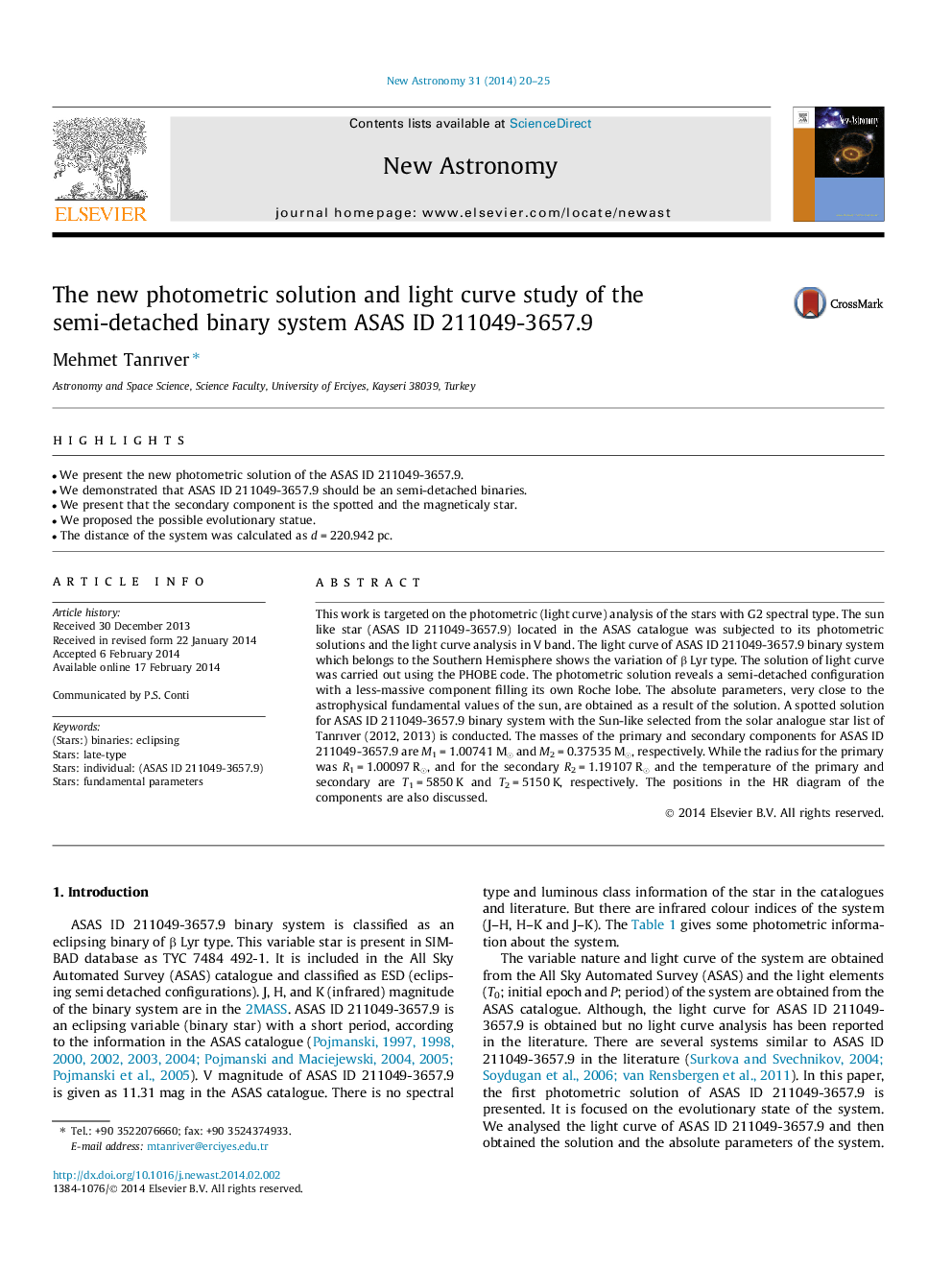| Article ID | Journal | Published Year | Pages | File Type |
|---|---|---|---|---|
| 1778922 | New Astronomy | 2014 | 6 Pages |
•We present the new photometric solution of the ASAS ID 211049-3657.9.•We demonstrated that ASAS ID 211049-3657.9 should be an semi-detached binaries.•We present that the secondary component is the spotted and the magneticaly star.•We proposed the possible evolutionary statue.•The distance of the system was calculated as d = 220.942 pc.
This work is targeted on the photometric (light curve) analysis of the stars with G2 spectral type. The sun like star (ASAS ID 211049-3657.9) located in the ASAS catalogue was subjected to its photometric solutions and the light curve analysis in V band. The light curve of ASAS ID 211049-3657.9 binary system which belongs to the Southern Hemisphere shows the variation of β Lyr type. The solution of light curve was carried out using the PHOBE code. The photometric solution reveals a semi-detached configuration with a less-massive component filling its own Roche lobe. The absolute parameters, very close to the astrophysical fundamental values of the sun, are obtained as a result of the solution. A spotted solution for ASAS ID 211049-3657.9 binary system with the Sun-like selected from the solar analogue star list of Tanrıver (2012, 2013) is conducted. The masses of the primary and secondary components for ASAS ID 211049-3657.9 are M1 = 1.00741 M⊙ and M2 = 0.37535 M⊙, respectively. While the radius for the primary was R1 = 1.00097 R⊙, and for the secondary R2 = 1.19107 R⊙ and the temperature of the primary and secondary are T1 = 5850 K and T2 = 5150 K, respectively. The positions in the HR diagram of the components are also discussed.
